It looks like you're using an Ad Blocker.
Please white-list or disable AboveTopSecret.com in your ad-blocking tool.
Thank you.
Some features of ATS will be disabled while you continue to use an ad-blocker.
share:
beansidhe
Here is another of the stones from Meigle, which may be showing the same story, although it is certainly more bizarre.
The woman, the procession/hunt, the mirror 'naming' her:
For Petes sake look whats on that stone! Lower left......a winged disk.

Early Babylonian.
reply to post by beansidhe
I'm sure they were sophisticated to a degree yep, but unfortunately they were never literate. This will always be the stumbling block on our forgotten society. I wish future generations luck with deciphering these stones, I had fun trying though
I'm sure they were sophisticated to a degree yep, but unfortunately they were never literate. This will always be the stumbling block on our forgotten society. I wish future generations luck with deciphering these stones, I had fun trying though
reply to post by Logarock
Oh my ####### ###!!
Oh my God.
What is that? A winged disc? What does it mean? This is bizarre - the Picts were using ancient Babylonian symbolism????
Oh my ####### ###!!
Oh my God.
What is that? A winged disc? What does it mean? This is bizarre - the Picts were using ancient Babylonian symbolism????
reply to post by Logarock
If you tell me alchemy came from the Babylonians, I swear I'll explode!
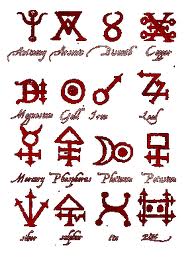
Look at the symbol for copper (top right)
And again, a bit clearer:
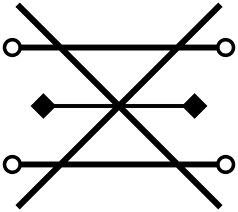
It's a Z-rod!!!

And if AtroxLux is right, and the symbols are their logos, they represent the Picts, then the Z-rod could be the symbol of the Druids!!
If you tell me alchemy came from the Babylonians, I swear I'll explode!

Look at the symbol for copper (top right)
And again, a bit clearer:

It's a Z-rod!!!

And if AtroxLux is right, and the symbols are their logos, they represent the Picts, then the Z-rod could be the symbol of the Druids!!
edit on 16-2-2014 by beansidhe because: Really, really over-excited
beansidhe
reply to post by Logarock
Oh my ####### ###!!
Oh my God.
What is that? A winged disc? What does it mean? This is bizarre - the Picts were using ancient Babylonian symbolism????
Some of these large type kingdoms liked to set up outposts in far flung regions for one reason or another. Vikings followed this age old pattern of taking over port cities and areas close, at the mouth of rivers ect. Nothing new there. It could very well be that these stones commemorate such an intrusion from some kingdom somewhere in the Mediterranean area.
What is a problem here is that winged disk sets the Pict timeline back at least 600 B.C. Certainly further than believed.
Just pure spec here but this intrusion may represent some group that had to flee Egypt when it was plummeted by the Babylonians. Royals had to flee and were probably loading ships down at the dock while the armies were approaching. If not there then think of any number of city states and nations caught up in devastating wars from which certain ruling family members had to flee. Just look at the flight of the Earls for a more resent event. Who by the way are still given standing and refuge in Portugal to this day.
At any rate I think few would argue that that symbol is not what it appears to be. If you take the winged disk in conjunction with the use of a known type of personal icon representation I would say that is evidence enough to proceed down that road of investigation.
reply to post by beansidhe
What sort of natural recourses does Scotland have in the way of copper?
I think it was around the tin mines in Cornwall that Egyptian jewelry was dug up? Its been so long that I have looked at any information on that.
What sort of natural recourses does Scotland have in the way of copper?
I think it was around the tin mines in Cornwall that Egyptian jewelry was dug up? Its been so long that I have looked at any information on that.
Logarock
beansidhe
Here is another of the stones from Meigle, which may be showing the same story, although it is certainly more bizarre.
The woman, the procession/hunt, the mirror 'naming' her:
The way this disk is presented as going before the riders is typical.
reply to post by Logarock
Lots, according to The mines of Scotland
COPPER
Coppermine Path NS 797 979 Landranger 57 a track near an old copper mine.
Watson 1995 The Ochils /Placenames, History and Tradition. Perth and Kinross District Libraries. 45
Knox 1787 p 125 copper mining at Kisserne and Applecross.
Pennant 1774 353 copper ore discovered at Wick. ND 36 51 1” OS 16
Lochcarron. NG 849 432 Remains of a copper mine.
Haswell-Smith 340 Copper ore is to be found at Sand Lodge on Mainland, Shetland
Hutton, Guthrie 2006 Mining: from Kirkintilloch to Clackmannan and Stirling to Slammanan. Stenlake [not seen]
Valentine 68
Williams 1 368-9 Ochil Hills – silver lead, cobalt etc.
Williams 2 419-420 Copper in Scotland. Ochils, Gourock, Currie, 5 mile west from Edinburgh, Sandlodge in Shetland, Conningsburgh Cliffs.
Lots, according to The mines of Scotland
reply to post by beansidhe
I think the Pictish Beastie is a seahorse. That is what it looks like. Not a dolphin or anything else, but a seahorse.
The knot-work shows the directions along with wind (or movement... indicating directions and movement both at the same time) I would think.
The rock with all the circles is showing time.
I think the Pictish Beastie is a seahorse. That is what it looks like. Not a dolphin or anything else, but a seahorse.
The knot-work shows the directions along with wind (or movement... indicating directions and movement both at the same time) I would think.
The rock with all the circles is showing time.
edit on 16-2-2014 by OpinionatedB because: (no reason given)
reply to post by beansidhe
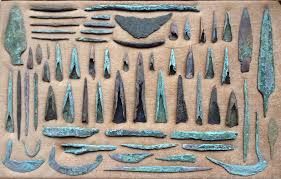
One of many copper tool and weapon stashes found in North America.
500,000 Ton of Missing Copper!
This is another subject but wanted to show the extremes the copper hungry bronze age world would go to to get copper back across the Atlantic.
Must go for now.

One of many copper tool and weapon stashes found in North America.
500,000 Ton of Missing Copper!
This is another subject but wanted to show the extremes the copper hungry bronze age world would go to to get copper back across the Atlantic.
Must go for now.
edit on 16-2-2014 by Logarock because: n
reply to post by OpinionatedB
Hello there!
That's funny, a few people have said seahorse, it could easily be. It's such an odd creature and it's on a huge number of the stones.
Direction of the wind is a brilliant idea, I'd not thought of that!
Hello there!
That's funny, a few people have said seahorse, it could easily be. It's such an odd creature and it's on a huge number of the stones.
Direction of the wind is a brilliant idea, I'd not thought of that!
Logarock
reply to post by beansidhe
One of many copper tool and weapon stashes found in North America.
500,000 Ton of Missing Copper!
This is another subject but wanted to show the extremes the copper hungry bronze age world would go to to get copper back across the Atlantic.
Must go for now.edit on 16-2-2014 by Logarock because: n
Wow, I had no idea. This is a labyrinthine task!
I like your idea -there's no reason that I can think of (although archaeologists might disagree) that the Picts couldn't have come over earlier; as you know I like the thinking that waves of peoples came over, at different times. It wouldn't surprise me in the least if the class 1 stones (pre-Christian) were found to be much older than they are currently said to be.
Some of the symbols from the Wemyss Caves are so similar to alchemical ones, I have to look into this more. I thought of alchemy as mediaeval, but looks like I might be wrong again!
Tin is also shown:
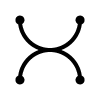
I can't help thinking the beastie is encoded as an animal, which is why it's not really shown as an animal, and it's why it's always at that weird hovering angle:
(Top middle)
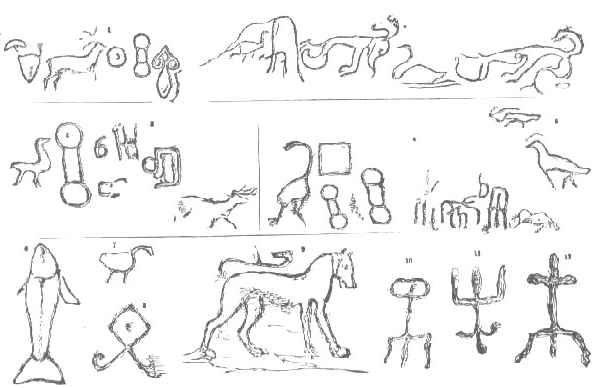
The abstract form:

Not necessarily this, but something like this:

All of which might make more sense of the Orkney pebbles (class 4)
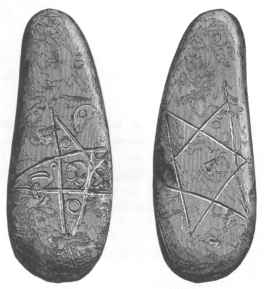

I can't help thinking the beastie is encoded as an animal, which is why it's not really shown as an animal, and it's why it's always at that weird hovering angle:
(Top middle)

The abstract form:

Not necessarily this, but something like this:

All of which might make more sense of the Orkney pebbles (class 4)

edit on 16-2-2014 by beansidhe because: Pebbles
reply to post by beansidhe
Wonderful topic and discussion beansidhe. I will echo the former sentiment....this thread is an outstanding example of the beauty this ats can put together/bravo!
Don't have much to add, but I do resonate with the ideas of stones marking paths for horse riders and, also, perhaps a planting guide, as mentioned.
As a big fan of starmaps, I also think this is a distinct possibility, too.
One thought which always occurs to me is that we may be looking at power objects, i.e stones when decorated in a particular way which then have their own innate power channeled or directed.
It's always seemed crystal clear to me that the ancestors had ways and means akin to our modern definition of 'magic', altho it may have been quite ordinary to them.
Thanks again for this most excellent discussion. I hope to visit and see some of these in person one day.
Cheers,
Nexo
-MacPherson Clan / Gillespie
Wonderful topic and discussion beansidhe. I will echo the former sentiment....this thread is an outstanding example of the beauty this ats can put together/bravo!
Don't have much to add, but I do resonate with the ideas of stones marking paths for horse riders and, also, perhaps a planting guide, as mentioned.
As a big fan of starmaps, I also think this is a distinct possibility, too.
One thought which always occurs to me is that we may be looking at power objects, i.e stones when decorated in a particular way which then have their own innate power channeled or directed.
It's always seemed crystal clear to me that the ancestors had ways and means akin to our modern definition of 'magic', altho it may have been quite ordinary to them.
Thanks again for this most excellent discussion. I hope to visit and see some of these in person one day.
Cheers,
Nexo
-MacPherson Clan / Gillespie
reply to post by nexotop
Welcome Nexo, and thank you for such kind words! A MacPherson, another live Pict to join us! I'm so glad you're enjoying this.
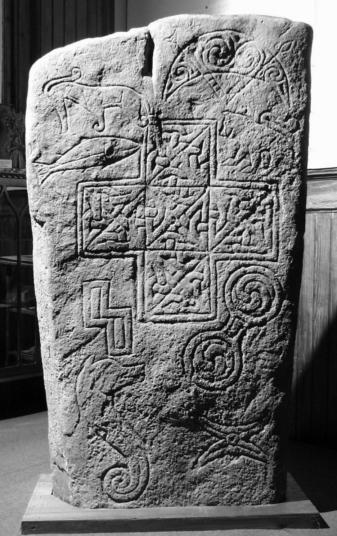
This has an air of magic around it, wouldn't you say? Every time I forget, someone else joins and reminds me about what I said on page 1 - that folklore will hold the key to this, and yes, you're right, Scotland is packed with tales of magic and the otherworld.
I planted a rowan tree when we moved into our house a couple of years ago, simply because my mother always told me they keep the fairies happy, and it is extremely bad luck to dig one up. You could say this is superstitious nonsense, and maybe it is, but the fact remains that the notion of appeasing another realm is still common here, even though we don't give it much thought. We think of it in terms of 'good luck' or 'bad luck' now.
In other words, what you are suggesting makes perfect sense, that these stones would have been power objects first, and as the years passed it was still 'good luck' to include the symbols on the stones, when depicting a battle or story.
Thanks nexo, you've given me loads to think about!
Welcome Nexo, and thank you for such kind words! A MacPherson, another live Pict to join us! I'm so glad you're enjoying this.
One thought which always occurs to me is that we may be looking at power objects, i.e stones when decorated in a particular way which then have their own innate power channeled or directed.
It's always seemed crystal clear to me that the ancestors had ways and means akin to our modern definition of 'magic', altho it may have been quite ordinary to them.

This has an air of magic around it, wouldn't you say? Every time I forget, someone else joins and reminds me about what I said on page 1 - that folklore will hold the key to this, and yes, you're right, Scotland is packed with tales of magic and the otherworld.
I planted a rowan tree when we moved into our house a couple of years ago, simply because my mother always told me they keep the fairies happy, and it is extremely bad luck to dig one up. You could say this is superstitious nonsense, and maybe it is, but the fact remains that the notion of appeasing another realm is still common here, even though we don't give it much thought. We think of it in terms of 'good luck' or 'bad luck' now.
In other words, what you are suggesting makes perfect sense, that these stones would have been power objects first, and as the years passed it was still 'good luck' to include the symbols on the stones, when depicting a battle or story.
Thanks nexo, you've given me loads to think about!
reply to post by Logarock
Just a question out of genuine interest, because I don't know how these things work. Why would the picts use a babylonian symbol if they were fleeing them? Would it be to symbolise who they were running from, or would that just be the 'common' art they were used to?
Just a question out of genuine interest, because I don't know how these things work. Why would the picts use a babylonian symbol if they were fleeing them? Would it be to symbolise who they were running from, or would that just be the 'common' art they were used to?
reply to post by beansidhe
There is a very good chance that they were not fleeing but establishing an outpost.
Also keep in mind that I am simply postulating based on the presents of certain evidence present in these stele. You know? A winged disk on a Pictish stone must be accounted for if only to the level of its association with known users of the icon. The type shown on the stone in question could be Hittite, Assyrian or Chaldean/Sumerian.
Also consider that all these kingdoms had conflict with one another but all used similar icons making it possible that the icon present in the Pictish stone could represent someone displaced by recent hostilities. Or considering say the Babylonian large scale attempt to rule the world this could represent the introduction of a visor to the Island.
This idea of coming into an area and setting up commemorative stele as sort of a state/royal propaganda is as old as the hills themselves and was very common in the mid east.
There is a very good chance that they were not fleeing but establishing an outpost.
Also keep in mind that I am simply postulating based on the presents of certain evidence present in these stele. You know? A winged disk on a Pictish stone must be accounted for if only to the level of its association with known users of the icon. The type shown on the stone in question could be Hittite, Assyrian or Chaldean/Sumerian.
Also consider that all these kingdoms had conflict with one another but all used similar icons making it possible that the icon present in the Pictish stone could represent someone displaced by recent hostilities. Or considering say the Babylonian large scale attempt to rule the world this could represent the introduction of a visor to the Island.
This idea of coming into an area and setting up commemorative stele as sort of a state/royal propaganda is as old as the hills themselves and was very common in the mid east.
edit on 17-2-2014 by Logarock because: n
reply to post by Logarock
Oh, I see. Sorry Logarock, I'm not the quickest off the mark sometimes!
Whilst doing a bit of reading, I noticed that some of these alchemical symbols are ancient and some authors have linked them to Babylonians.
I'm going to keep looking at this and see if there are more similarities.
Cheers
Oh, I see. Sorry Logarock, I'm not the quickest off the mark sometimes!
Whilst doing a bit of reading, I noticed that some of these alchemical symbols are ancient and some authors have linked them to Babylonians.
I'm going to keep looking at this and see if there are more similarities.
Cheers
reply to post by beansidhe
Another question we need to answer here is why the romans were receiving large tribute form the island before they invaded it. They did not invade until Cradog. When Cradog fled north he was arrested by the brigantines queen Carthimandua and turned over to the Romans.
Look what the Celtic breakdown of her name is......carti-to chase, expel
mandua-pony
Tacitus refers to her as being of "illustrious birth". Or as it sounds to me from a recognized family line.
Maybe from here
Cartimandua
Another question we need to answer here is why the romans were receiving large tribute form the island before they invaded it. They did not invade until Cradog. When Cradog fled north he was arrested by the brigantines queen Carthimandua and turned over to the Romans.
Look what the Celtic breakdown of her name is......carti-to chase, expel
mandua-pony
Tacitus refers to her as being of "illustrious birth". Or as it sounds to me from a recognized family line.
Maybe from here
Cartimandua
reply to post by Logarock
Well that might be a very real possibility, because earlier in this very thread (p.4) there was a link to the Phoenicians, although I was concentrating on the link between Rosslyn and the Picts at the time :
So if Cartimandua (expelled by pony), from Carthage, which was itself a Phoenician outpost, lived in Scotland as a queen, of royal lineage, and her fellow Phoenicians intermarried with the locals and the subsequent mixture of people themselves were all known as the Picts - much like I'd say 'Americans' to describe a vast array of people who live together in one land... then the carving on the stone could be telling of her expulsion? Or her expelling Cradog, perhaps.
Well that might be a very real possibility, because earlier in this very thread (p.4) there was a link to the Phoenicians, although I was concentrating on the link between Rosslyn and the Picts at the time :
In The Painted Caravan, Rakoczi further relates: "But what is this word, Tarot? Is its root to be found in the name of the Tinker's secret language, the Shelta Thari, which was discovered by Charles Godfrey Leland and was, after much scholarly research by George Sampson, proved to be a Q-Celtic language; for, though the Tinker is decried by his brother Gypsy, he is, it is now thought, a descendent of ancient dispossessed land owners, the Picts, who, in turn, had inter-married with Phoenicians and had equally their roots (perhaps intertwined with those of the Gypsies) in the Orient?"
So if Cartimandua (expelled by pony), from Carthage, which was itself a Phoenician outpost, lived in Scotland as a queen, of royal lineage, and her fellow Phoenicians intermarried with the locals and the subsequent mixture of people themselves were all known as the Picts - much like I'd say 'Americans' to describe a vast array of people who live together in one land... then the carving on the stone could be telling of her expulsion? Or her expelling Cradog, perhaps.
edit on 17-2-2014 by beansidhe because: Slowly starting to get it.
new topics
-
University of Texas Instantly Shuts Down Anti Israel Protests
Education and Media: 2 hours ago -
Any one suspicious of fever promotions events, major investor Goldman Sachs card only.
The Gray Area: 4 hours ago -
God's Righteousness is Greater than Our Wrath
Religion, Faith, And Theology: 8 hours ago -
Electrical tricks for saving money
Education and Media: 11 hours ago
top topics
-
VP's Secret Service agent brawls with other agents at Andrews
Mainstream News: 13 hours ago, 10 flags -
Cats Used as Live Bait to Train Ferocious Pitbulls in Illegal NYC Dogfighting
Social Issues and Civil Unrest: 17 hours ago, 8 flags -
Nearly 70% Of Americans Want Talks To End War In Ukraine
Political Issues: 14 hours ago, 5 flags -
Sunak spinning the sickness figures
Other Current Events: 13 hours ago, 4 flags -
Electrical tricks for saving money
Education and Media: 11 hours ago, 4 flags -
Late Night with the Devil - a really good unusual modern horror film.
Movies: 15 hours ago, 2 flags -
Any one suspicious of fever promotions events, major investor Goldman Sachs card only.
The Gray Area: 4 hours ago, 2 flags -
University of Texas Instantly Shuts Down Anti Israel Protests
Education and Media: 2 hours ago, 1 flags -
God's Righteousness is Greater than Our Wrath
Religion, Faith, And Theology: 8 hours ago, 0 flags
active topics
-
Nearly 70% Of Americans Want Talks To End War In Ukraine
Political Issues • 49 • : YourFaceAgain -
Electrical tricks for saving money
Education and Media • 6 • : lordcomac -
Scientists Say Even Insects May Be Sentient
Science & Technology • 57 • : FlyersFan -
Sunak spinning the sickness figures
Other Current Events • 16 • : Freeborn -
President BIDEN Vows to Make Americans Pay More Federal Taxes in 2025 - Political Suicide.
2024 Elections • 139 • : xuenchen -
University of Texas Instantly Shuts Down Anti Israel Protests
Education and Media • 9 • : Vermilion -
Should Biden Replace Harris With AOC On the 2024 Democrat Ticket?
2024 Elections • 50 • : YourFaceAgain -
New whistleblower Jason Sands speaks on Twitter Spaces last night.
Aliens and UFOs • 57 • : baablacksheep1 -
HORRIBLE !! Russian Soldier Drinking Own Urine To Survive In Battle
World War Three • 39 • : crayzeed -
British TV Presenter Refuses To Use Guest's Preferred Pronouns
Education and Media • 147 • : Annee

